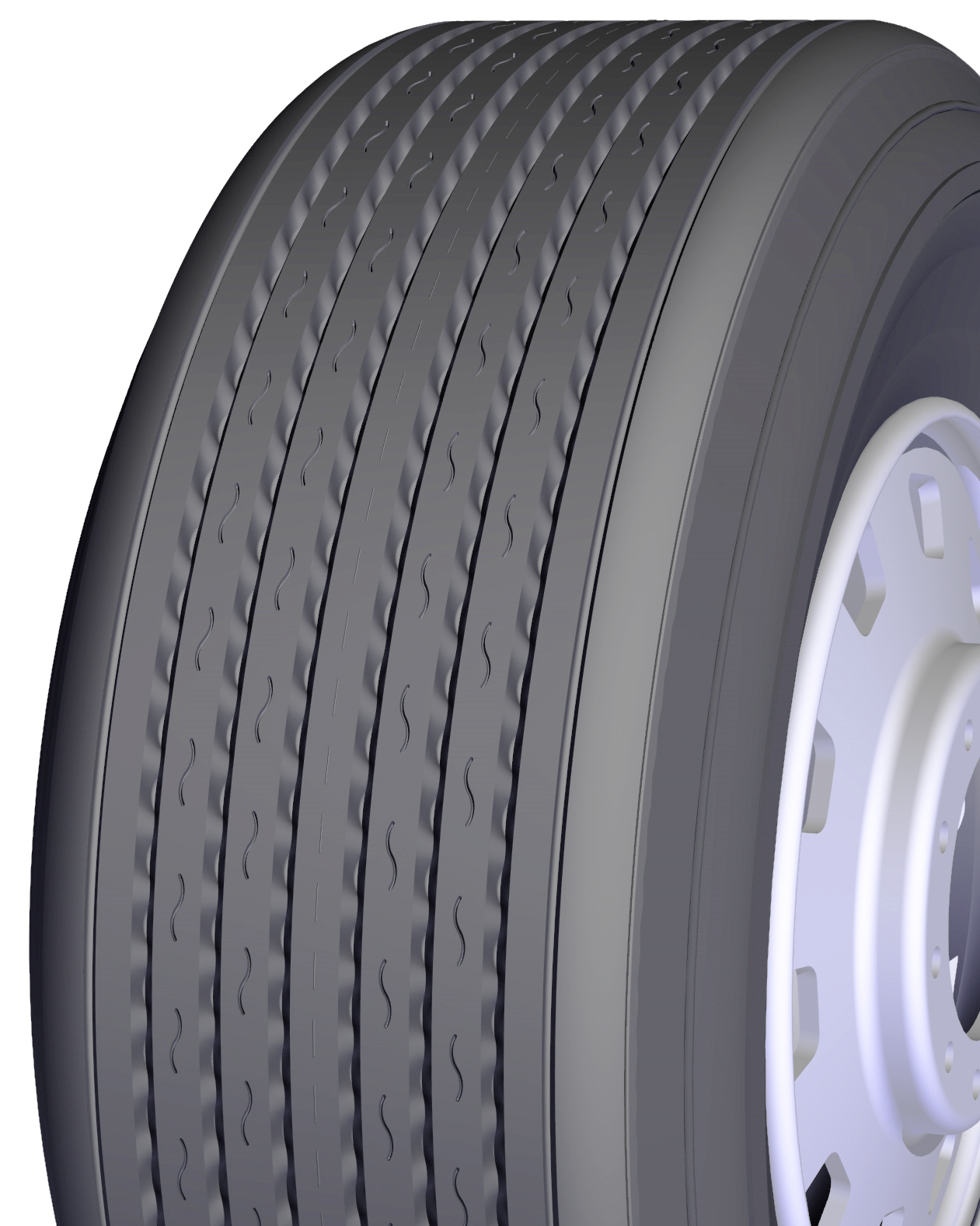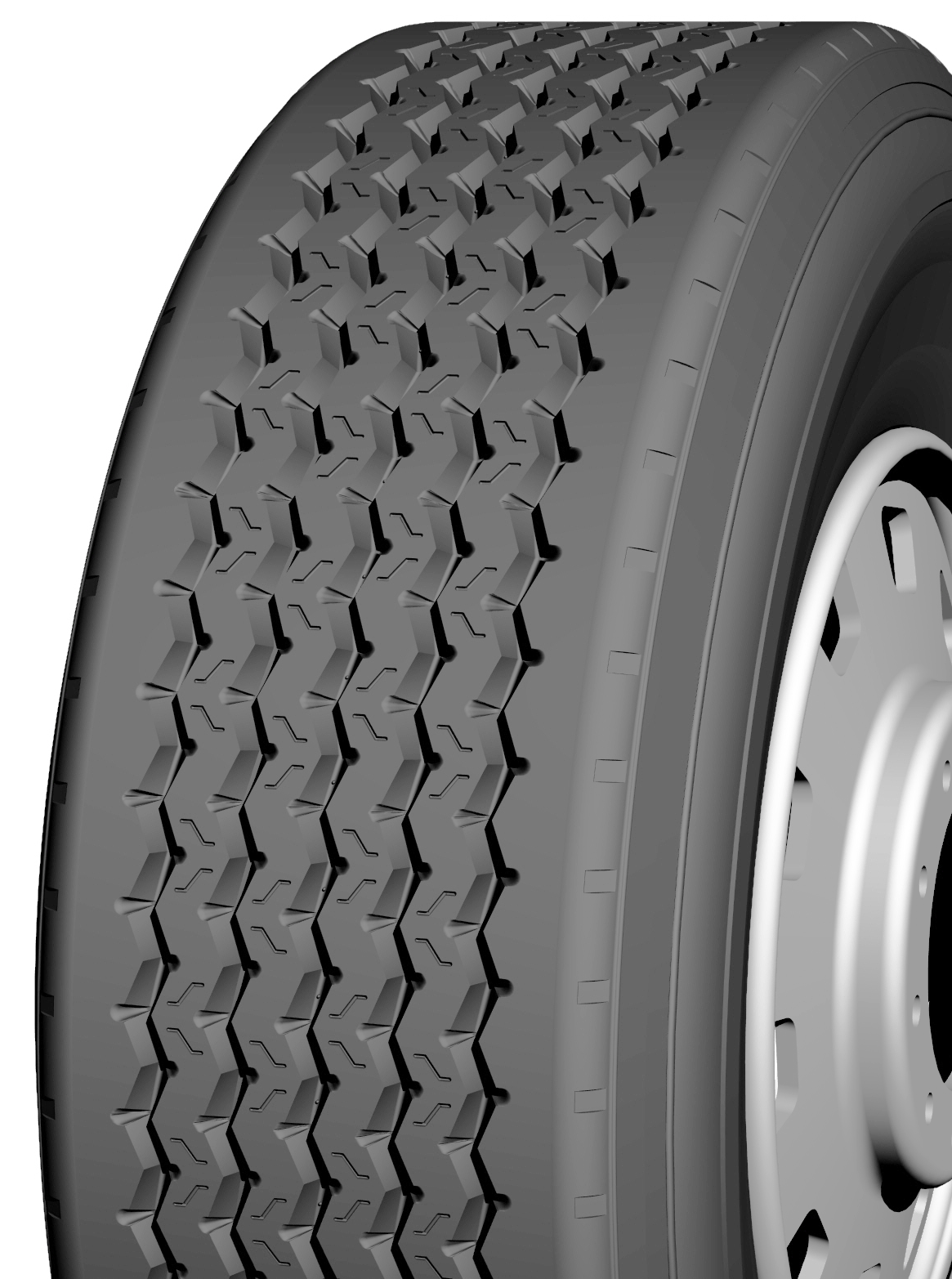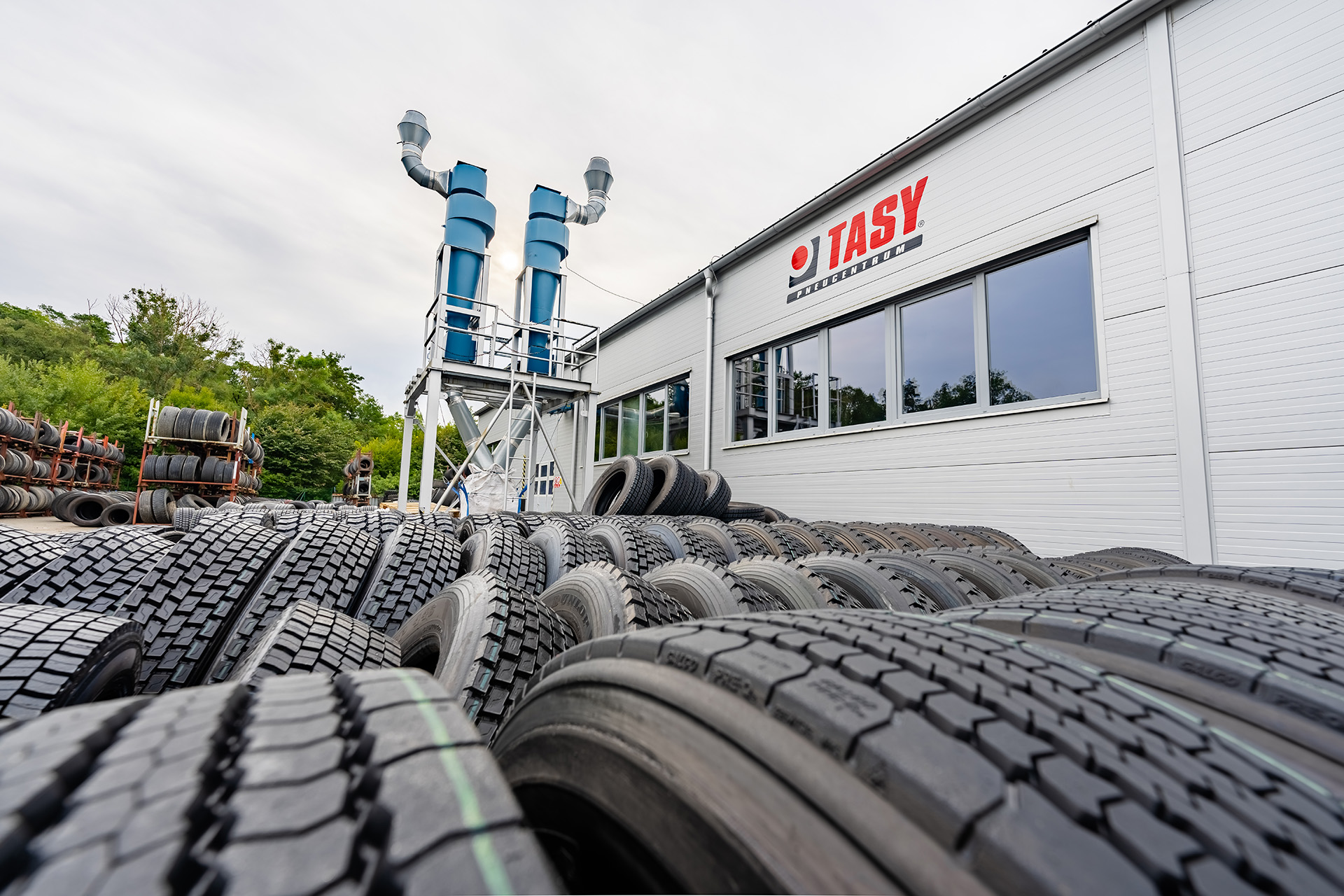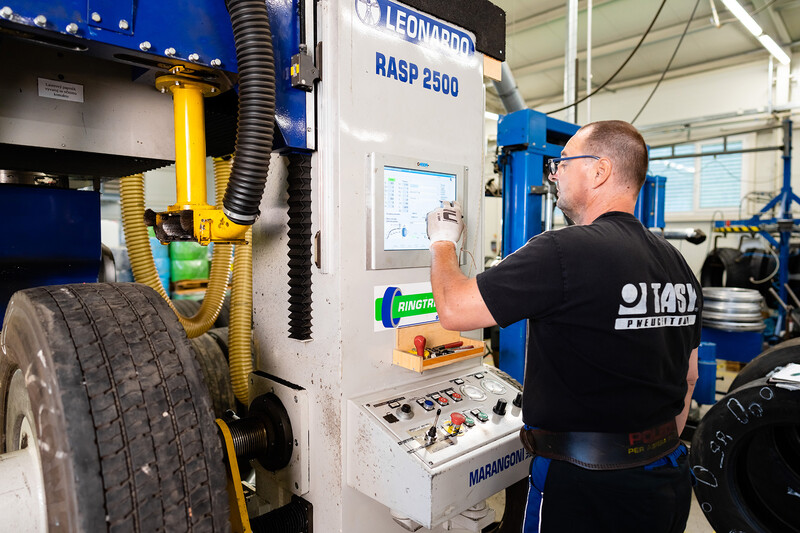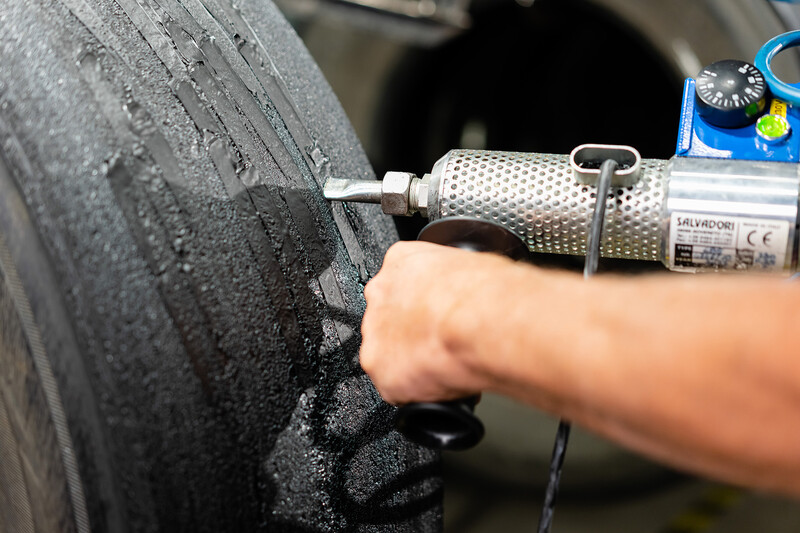
Retread manufacturing process

Cold cure retreading since 1997
We use the cold cure technology for retreading using materials from the Mexican company Galgo and the Italian manufacturer Marangoni. Thanks to the combination of two world-class manufacturers and the breadth of our tread portfolio, we are able to cover all our customers' needs.Retreading process
1.


Securing casings for retreading
The very first step before the start of production is the collection of worn out tyres (the so-called casings) from the customer, which we transport to our warehouse. If the customer does not have casings, we also offer stock retreads including casings directly for sale.
2.


Initial inspection of the casings
Before production begins, experienced personnel will carry out a visual inspection on the stretching machine to determine the condition of the casing.
3.


Pressure test
During the initial inspection, the casing is also subjected to a pressure test corresponding to the tyre's operating pressure. If no defects are detected, in particular cord separation, production starts.
4.
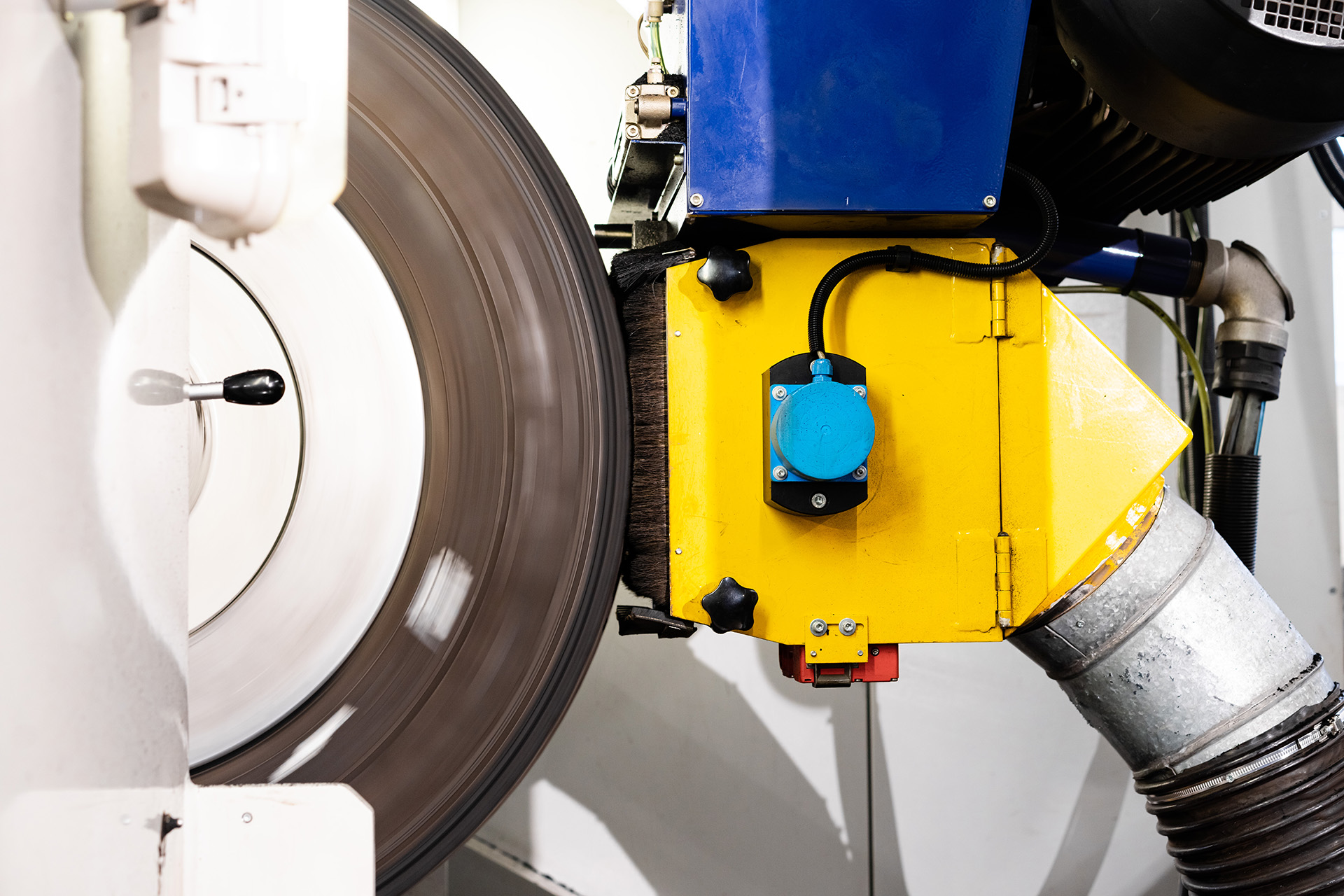

Buffing of the tread
The remnants of the old tread have to go away. The automatic buffing machine not only removes the rubber layers right up to the first tire bumper, but roughens the casing surface so that the bonding rubber then adheres as well as possible.
5.


Grinding
In the place of exposed wires of the casing, it is necessary to carry out the repairs by thorough grinding using a special disc, including subsequent treatment with a grinding stone.
6.


Cementing of the casing
For perfect vulcanisation, the casing must be free of dirt, water and grease. As a precautionary measure, a so-called cement (vulcanising compound dissolved in petrol) is applied to the buffed casing in the spray booth to form a protective film on the casing.
7.


Repairs
Casings that are diagnosed with a repairable puncture or hole during the initial inspection or pressure test are professionally repaired using modern repair materials.
8.
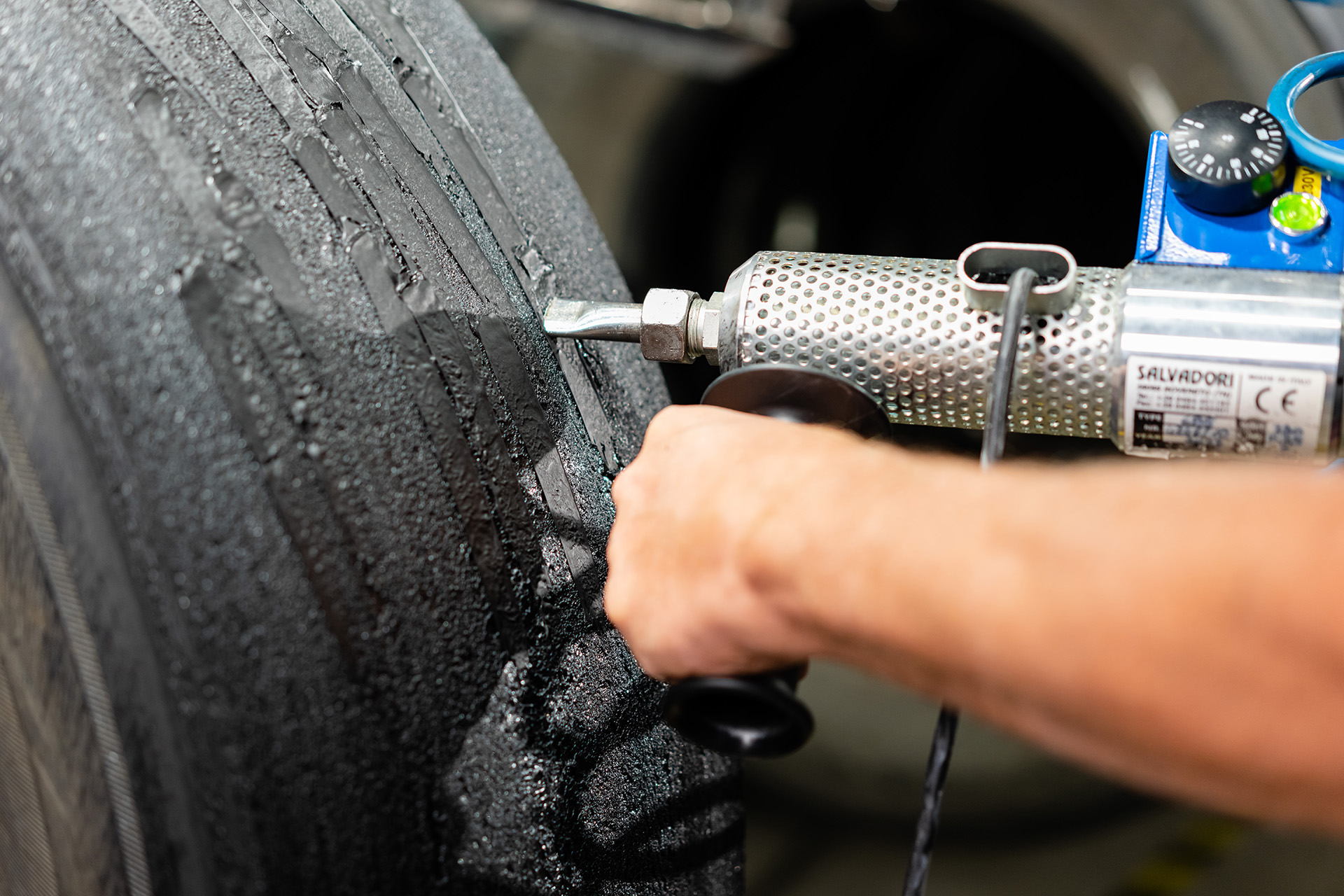

The extruder
At the latest 3-4 hours after the buffing, the exposed and ground wires of the casing must be repaired with a repair bindegum by means of an extruder, which heat-treats the bindegum into a ductile form and extrudes it into the exposed area by means of a screw device.
9.


Rolling of the new tread
Rolling the new tread must be done under a uniform pull around the circumference of the tyre, which is ensured by an automatic rolling machine that also uses a laser to precisely roll the tread in the casing shoulder.
10.


Enveloping
Three factors are important for thorough curing: time, temperature and pressure. To achieve maximum pressure, an envelope is used, from which air is sucked out by a vacuum machine when the tread is mounted on the casing, thus maximising the pressure of the tread on the casing.
11.


Vulkanisation
The wrapped casings, including the tread, are placed in envelopes in an autoclave where they are connected to a suction system so that a vacuum can be maintained throughout the vulcanisation process. The autoclave is pressurised to 6 bar, which further pressurises the pressure between the tread and the casing and heats it to the prescribed temperature. The vulcanisation process is carried out according to a precisely defined optimum time, depending on the type of fasteners used.
12.


Output control
After vulcanisation, a visual check is made to ensure that everything is in order, followed by a final pressure test to ensure that the carcass has not been disturbed during vulcanisation.
13.


Cosmetic adjustments and storage
The final step in the finished product is the surface treatment in the form of a new coating of the sidewall with black tyre varnish and then stacking. At this point, the tread is ready for dispatch to our customers.
Myths and facts about retreading
In the vast majority of cases, a truck tyre bursts due to overheating due to underinflation, vehicle overloading or a puncture. The consequence is not a failure of the retread, but of the casing of the tyre, which bursts. It is a myth that retread belts are lying around on the side of the highway due to tread separation. Ironically, the junction between the casing and the tread belt is one of the strongest points on the tyre due to vulcanisation.
Yes, it is. Retreading tyres is a strictly controlled process that requires modern technology and quality proven casings, which our company undoubtedly has. In addition, we have to carry out an annual audit of production conformity, without which the operation would not be approved.
By the way, if you still don't trust the retreads, don't get on the plane. Almost all airlines use retreaded tyres on their aircraft.
By the way, if you still don't trust the retreads, don't get on the plane. Almost all airlines use retreaded tyres on their aircraft.
When used correctly and external factors affecting tyre life are respected, retreads can hold their own against new tyres. Cheap Asian brands often offer worse mileage than a well-made tread on a premium casing. However, it is essential to choose the right tread pattern for the type of traffic, maintain the correct tyre pressure, maintain the prescribed vehicle weight and adapt the driving style to the road conditions.
Retreading catalogue
Our company cooperates mainly with world producers of retreading material of Galgo and Marangoni brands.
We offer a wide portfolio of treads for different types of applications.


Galgo AD
Drive, 3PMSF
Detail


Galgo ADT
Drive, 3PMSF
Detail


Galgo CS
Drive, M+S
Detail


Galgo KOP
Drive, 3PMSF
Detail


Galgo LDT
Drive, 3PMSF
Detail
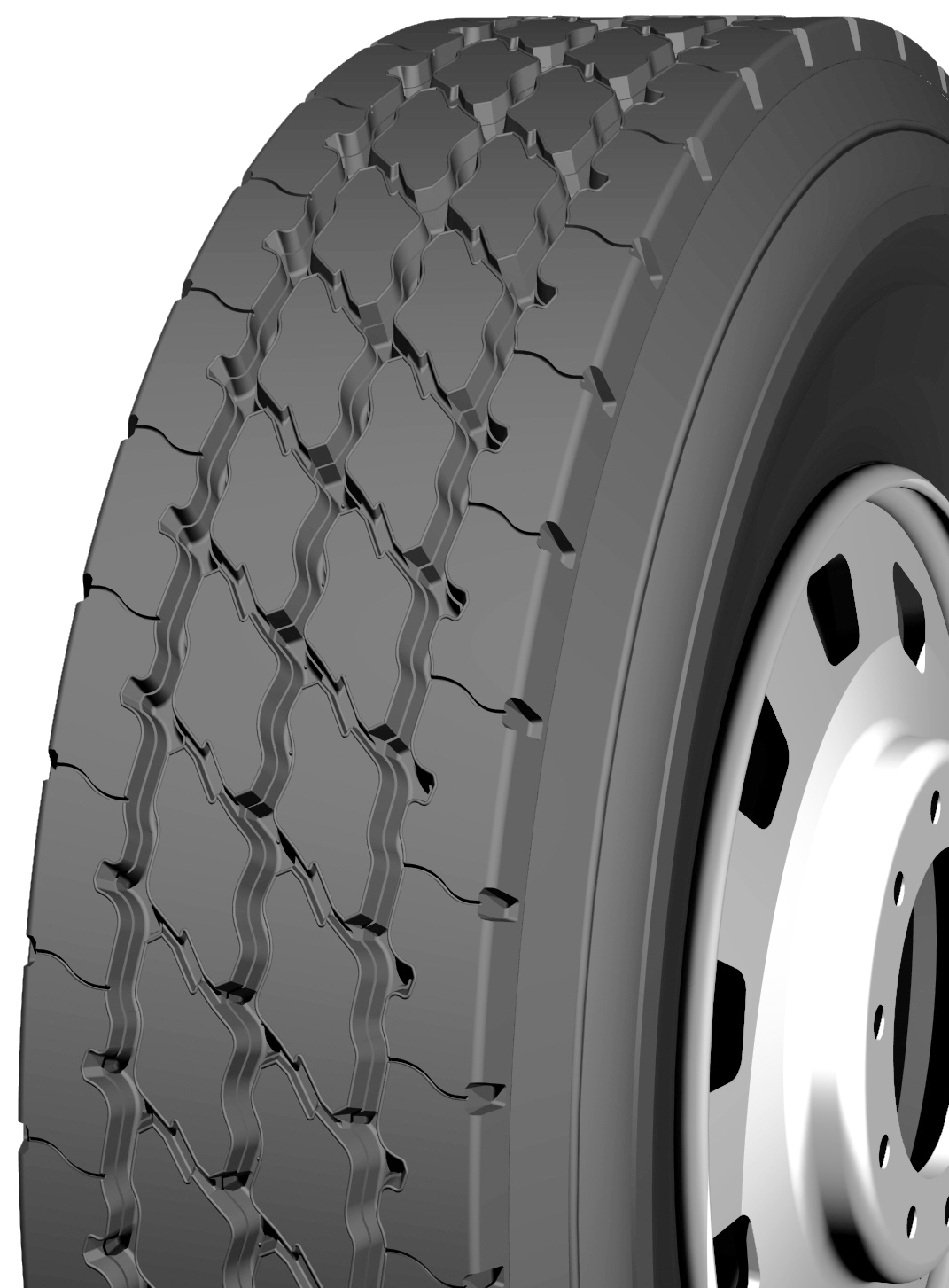

Galgo MPO
Steer, M+S
Detail


Galgo MS
Drive, 3PMSF
Detail


Galgo RT
Drive, M+S
Detail


Galgo STC
Trailer, 3PMSF
Detail


Galgo TR
Drive
Detail


Galgo WHR
Steer
Detail
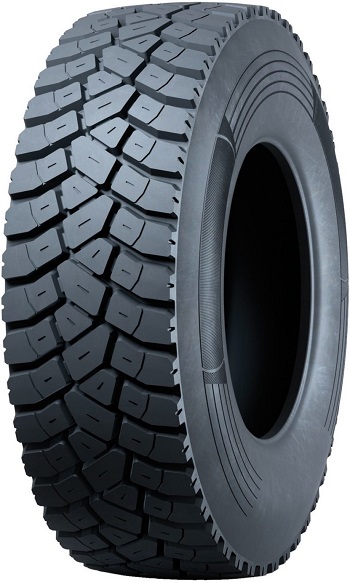

Marangoni MIX 100
Drive, 3PMSF
Detail
Do you need help?
We are here to help you






